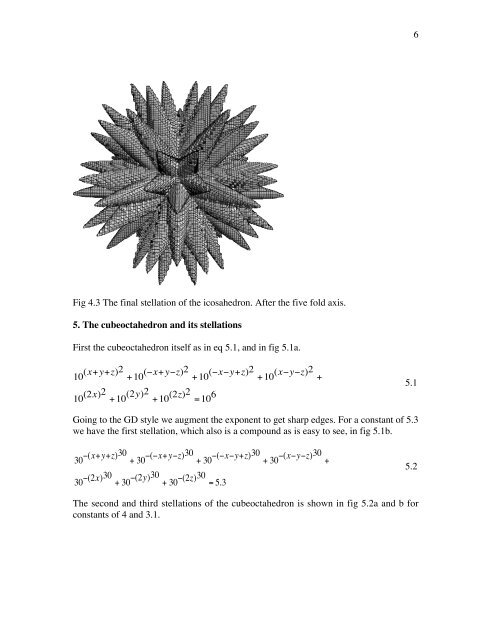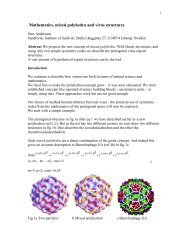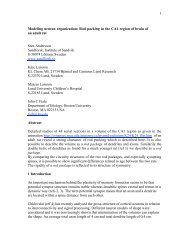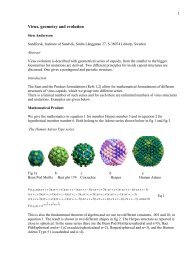1 Stellations, compounds, periodicity and the ... - Sandforsk
1 Stellations, compounds, periodicity and the ... - Sandforsk
1 Stellations, compounds, periodicity and the ... - Sandforsk
You also want an ePaper? Increase the reach of your titles
YUMPU automatically turns print PDFs into web optimized ePapers that Google loves.
6<br />
Fig 4.3 The final stellation of <strong>the</strong> icosahedron. After <strong>the</strong> five fold axis.<br />
5. The cubeoctahedron <strong>and</strong> its stellations<br />
First <strong>the</strong> cubeoctahedron itself as in eq 5.1, <strong>and</strong> in fig 5.1a.<br />
10 (x+y+z)2 +10 (-x+y-z)2 +10 (-x-y+z)2 +10 (x-y-z)2 +<br />
10 (2x)2 +10 (2y)2 +10 (2z)2 =10 6 5.1<br />
†<br />
Going to <strong>the</strong> GD style we augment <strong>the</strong> exponent to get sharp edges. For a constant of 5.3<br />
we have <strong>the</strong> first stellation, which also is a compound as is easy to see, in fig 5.1b.<br />
30 -(x+y+z)30 + 30 -(-x+y-z)30 + 30 -(-x-y+z)30 + 30 -(x-y-z)30 +<br />
30 -(2x)30 + 30 -(2y)30 + 30 -(2z)30 = 5.3<br />
5.2<br />
†<br />
The second <strong>and</strong> third stellations of <strong>the</strong> cubeoctahedron is shown in fig 5.2a <strong>and</strong> b for<br />
constants of 4 <strong>and</strong> 3.1.







